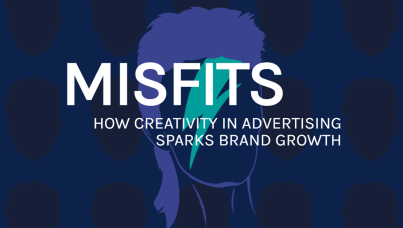

Ipsos x Effie Denmark Trends Report
What does it take to create a campaign that actually works? This question is answered by the Effie Denmark Trends Report 2022-2024, developed by Ipsos based on the last three years of Danish Effie data. The report, published on Tuesday, June 3, outlines the characteristics of winning campaigns from recent years' Effie Awards.
For those working in agencies and perhaps preparing an Effie case for the Effie Awards 2025, the report offers a treasure trove of insights—especially about how agencies should think about strategy, insight, and creativity when aiming for effectiveness.
Watch the recording from the launch event at KreaKom on June 3, 2025.
Winners' Perspective Starts with the Target Group and Maintains Focus
One of the most notable differences between the winners and others in the Effie Awards is how they define their challenges. While some campaigns start from the needs and wants of the advertiser's company or organization, the winners take an outside-in perspective to a much greater extent. The campaigns start with the consumers' reality and the societal context—then place the brand where it makes sense.
The report also shows that winners are far better at maintaining focus. Typically, they work with a single, clearly defined goal rather than spreading efforts across multiple ambitions. This makes the campaign easier to execute, easier to understand, and much easier to measure.
Those who successfully land their creative effectiveness are the ones who ask, what problems do we have in the world, rather than what problems do we have in the organization
- Alexander Asmussen, head of Creative Excellence at Ipsos
The report also indicates that Danish campaigns with a social or environmental purpose have significant impact. Effie winners are more often strategically linked to one or more of the UN's Sustainable Development Goals (SDGs) than other campaigns. When brands manage to address issues that concern Danes the message is perceived as both relevant and credible, according to the analysis.
The Best Campaigns Start with Knowledge, Not Assumptions
Data and understanding of the target group are not just nice-to-haves—they are a cornerstone of effective communication. The Effie report documents that winning campaigns far more often base themselves on extensive consumer research than unsuccessful ones. The most skilled agencies and advertisers invest early in the process to understand who the target group is, how they think, and what matters in their lives. It's not just about demographics or behavioural data—but identifying human drivers, emotional barriers, and cultural codes that a campaign should play against.
Effect Requires Investment and Strategic Choices
Although there are several examples of low-budget campaigns that achieve great results, the data from the report reveals a clear trend: The greater the investment in production and media planning, the more effective the campaign is considered. Winners in the Effie context are more often among those who invest over DKK 3 million in production and other non-media-related expenses, as well as media purchases. But the Effie Trend report emphasizes that this does not mean one always needs to spend more—but that ambition and budget must align. The number of touchpoints itself is not an indicator of a campaign's success. In fact, there's no correlation between many channels and high effect. Effie winners stand out by choosing the most relevant and precise channels.
Creativity is Not Enough—It Must Be Felt
The Effie report puts numbers on something many in the industry already sense: The campaigns that really work are those that combine creativity with clarity and human insight. Creative strong campaigns create a 44 percent higher sales effect than those without the same level of creativity. A stronger creative experience, a clearer idea and greater empathy for the target audience is of essence.
One of the most prominent characteristics of winning campaigns is their ability to show genuine understanding of the target audience. They address real needs, challenges, and dreams—and meet people where they are.



